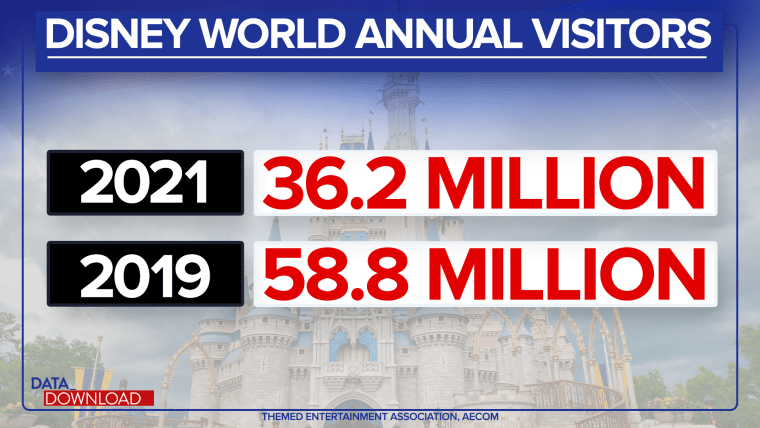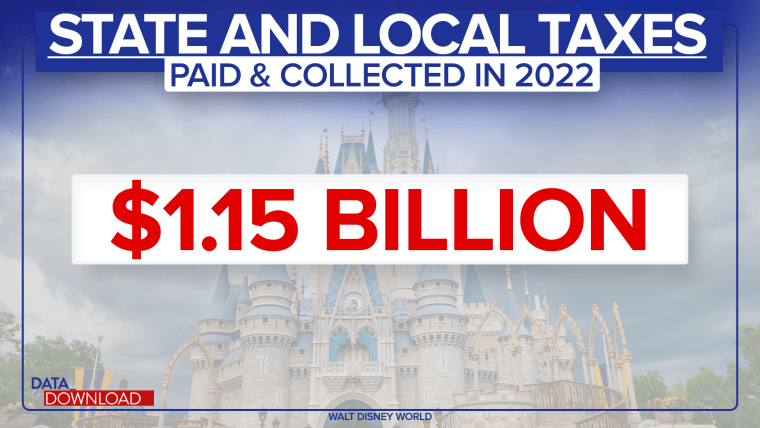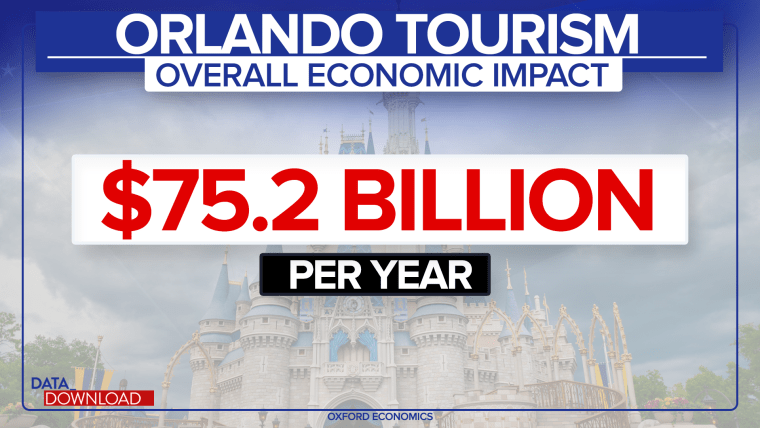WASHINGTON — In a world where politicians often fight to win big employers and keep them happy, it’s both unique and odd for a sitting Republican governor to go to war with a business crucial to his state’s economic well-being ... on the eve of a potential presidential campaign.
The feud between Florida Gov. Ron DeSantis and Walt Disney Co. took a strange turn last week when DeSantis mused about putting a prison near the company’s Orlando-area theme park complex to punish it for its allegedly “woke” policies.
It was the latest volley in a battle that goes back to the company’s criticizing DeSantis’ Parental Rights in Education Bill, dubbed the “Don’t Say Gay Bill” by opponents. The rhetorical back-and-forth has become a political sideshow, with neither side wanting to give an inch.
From attracting visitors to filling tax coffers, it’s hard to overstate Disney’s impact on the Florida economy — which is a centerpiece of DeSantis’ political story.
Start with the most basic measure: foot traffic. The company’s four theme parks and two water parks draw millions to central Florida every year.

In 2021, as the country was emerging from the Covid-19 pandemic, Disney attracted more than 36 million people to the Orlando area. That’s a little more than one-tenth of the U.S. population. But even that doesn’t fully measure the flow of people into Florida for Disney.
Just two years earlier, before the pandemic happened, Disney’s parks brought about 59 million people to Florida, an average of more than a million per week. And as the pandemic recedes into the national memory, the visitor numbers are likely to edge up again.
That’s a lot of people, and when they come to town, they need places to stay and food to eat. They order drinks. They buy sunscreen, big hats and a whole lot more. In short, they generate a lot of tax revenue.

Disney says it paid and collected more than $1.1 billion in state and local tax revenues in Florida last year. That’s real money, more than a lot of line items in the state budget.
It’s much bigger than the $350 million budgeted for Elder Affairs, the $492 million for the Fish and Wildlife Conservation Commission or the $563 million set aside for Highway Safety and Motor Vehicles. So, yes, the Magic Kingdom has a big impact on the state budget — as well as the budgets of the communities in the Orlando area.
Furthermore, those figures do not take into account the other ways Disney generates tax revenues for the state. After all, not all those millions of Disney visitors actually stay at the park. Some stay at nearby hotels and eat at area restaurants. Some go on side day trips. Those bills all generate tax receipts too.
And even accounting for every dime of tourism tax revenue Disney generates for the state misses the other side of the equation: Disney’s parks are massive employers in Florida.

Walt Disney Co. says it has about 75,000 employees in the state. That would place it among the top private employers in Florida. Solid tallies are hard to come by in this area, but according to the Florida Department of Economic Opportunity, that would make Disney the second-largest private employer in the state, behind only the Publix grocery chain.
Those employees contribute to the state economy in a long list of ways. They buy homes, pay rent, shop and go to other theme parks. They’re part of the larger economic system that makes the state go round.
In fact, when you add it all up, the Orlando tourism economy, of which Disney sits at the center, has a gigantic impact on the Florida economy.

A 2019 study by Oxford Economics found that Orlando-area tourism generated $75.2 billion in economic impact for central Florida — about $1,000 for every tourist.
To be clear, Disney is only part of that number, but going by all the other figures here, it is a pretty big part of it. After all, Disney more or less created the modern central Florida tourism model when the doors to Disney World opened in 1971. And for many families with children, “the trip to Disney” is still a rite of passage.
The numbers are enough to make one wonder why DeSantis would want to badger the home of Mickey Mouse. It’s hard to imagine Michigan Gov. Gretchen Whitmer’s wanting to start a big public fight with General Motors or Ford or California Gov. Gavin Newsom’s wanting to attack Apple. Even if they don’t agree with everything those companies do, why mess with a good thing? Constituents tend to like jobs and tax revenues.
Team DeSantis could rightly argue that Disney is different. After all, the company has spent 50 years and billions of dollars building its greater Orlando empire. It isn’t likely to go anywhere. And for a governor (and possible presidential candidate), there may be good politics in taking on a company that the right perceives as “woke.”
But starting a fight with a huge in-state employer that produces billions in economic impact and that has a large and skilled legal team is no small thing. After all, Disney has its own constituency in Florida and nationally. That’s why the DeSantis-Disney fight is unique — and why it seems unlikely to end quickly if neither side backs down.